- HubPages»
- Food and Cooking»
- Cooking Ingredients»
- Vegetable Ingredients
Asparagus Roasted
Spring Asparagus with Moroccan Lemons
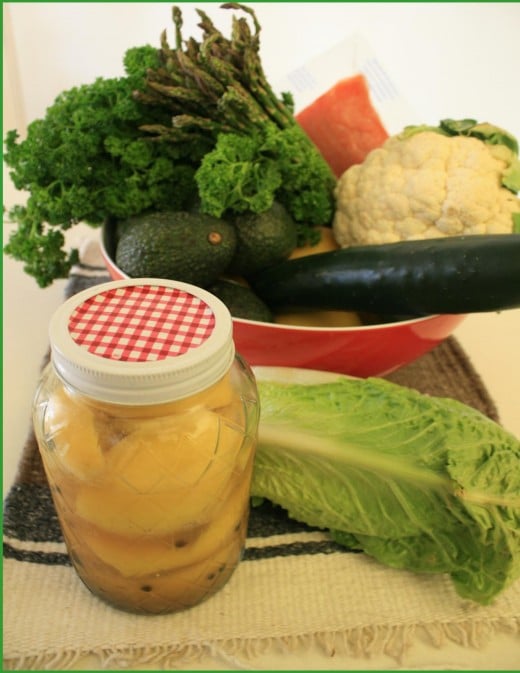
Asparagus
Asparagus
Asparagus (Asparagi Cochinchinensis) is a spring staple fresh from the Farmer’s Market. There are many ways to prepare it but roasting it is the best to retain the taste and health benefits.
Asparagus is already showing up at our markets here in the Southwest. This is a welcome addition to our fresh vegetable selection.
Asparagus is considered a wonderful spring tonic in many cultures. Cod liver oil is also considered a wonderful spring tonic in many cultures but I will take the fresh roasted asparagus rather than a dose of cod liver oil, thank you!
Here is a bit about asparagus and one lovely roasted asparagus recipe!
Easy Preparation
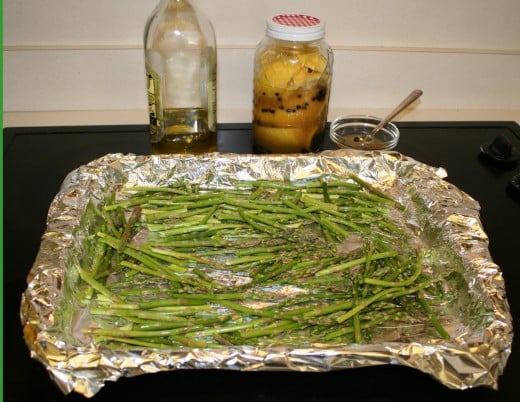
Fresh Asparagus Bake
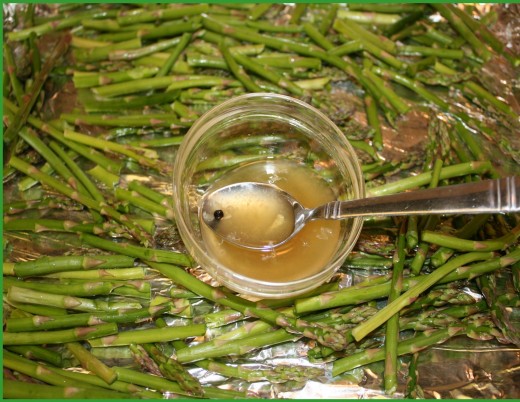
Asparagus Toothsome and Yummy!
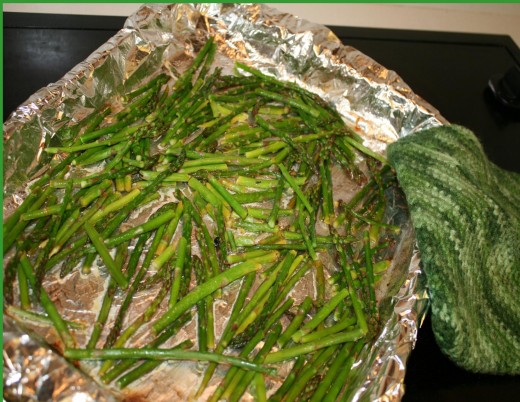
Cook Time
Ingredients
- 1 bunch asparagus
- 1 T. Moroccan Preserved Lemon Juice
- 1-2 T. olive oil
Preparation
- Pre-heat the oven to 350 degrees. Line a pan with aluminum foil and spray with non-stick cooking oil.
- Grasp asparagus near the bottom and snap off the woody part. Discard.
- Wash the asparagus.
- Grasp the washed asparagus near the bottom and snap off the stem part from the tips. Do leave some stem on the tips! The stem still is a bit tougher than the tips.
- Place dried stems and tips in the pan. Sprinkle with Moroccan Preserved Lemon juice and olive oil. Gently toss the asparagus with your hands and lay out flat.
- Bake for 10 minutes. Toss and bake for an additional 5-7 minutes. This will make al dente / toothsome asparagus.
- The tips are excellent served warm with a meal. The tips make an excellent addition to salads the next day!
Easy to Make Recipe Tip
Here is a surprisingly easy recipe for fresh asparagus. You might wish to place the stems in one end of the baking sheet and the tips in another. Use the tips for a lovely dinner presentation and use the stems the next day cold from the fridge in a salad.
If you do not have nor want to make the Moroccan Preserved Lemons; You may also use regular lemon juice, sea salt, and olive oil.
However, the flavor layers will not be as rich and full. The Moroccan Preserved Lemons make your asparagus dish a gourmet specialty worthy of the finest chef. It is well worth your time to make the Moroccan Preserved Lemons.
You may also purchase Moroccan Preserved Lemons. (see below)
Gourmet on the Easy
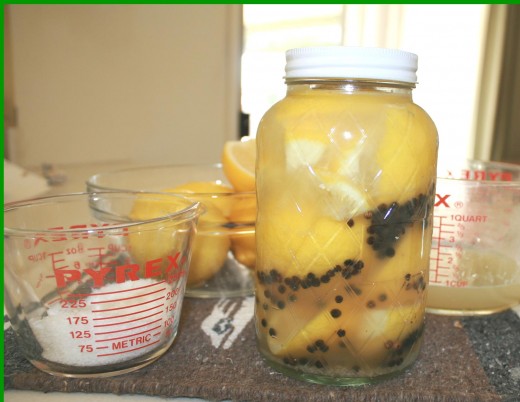
How to make Moroccan Preserved Lemons
- Lemons Preserving and Using From Meats to Desserts
Lemon Preservation The Many Uses of Preserved Lemons Moroccan Style Preserved Lemons Flavors for roasts, stews, sauces, and salads. This is another way to impart zesty healthy flavor.
Purchase Moroccan Preserved Lemons from Gourmet Sites
Ayurvedic Medicine on Asparagus
For about 5,000 to 6,000 years (give or take a thousand years), Ayurvedic Medicine in India has used asparagus to regulate hormones. It is also used to prevent and treat ulcers, inflammation, and liver problems.
The diuretic properties of the asparagus are also recognized as a cleansing method for the blood and body in the Ayurvedic tradition.
Ayurvedic medicine is often concerned with supporting liver function. Indeed, the liver is the cleansing organ for much of what is consumed. When you consume everything from alcohol, fatty foods, to medicine, your liver is a front line of your body’s defenses.
Chinese Medicine on Asparagus
Chinese Traditional Medicine considers asparagus to be a tonic. Asparagus is considered a moistening food and if eaten in the spring it will help relieve dry skin. It is also deemed as a support for the lungs and will aid in cleansing the lungs of toxins.
The diuretic properties of the asparagus plant are valued by Chinese practitioners as a tonic for the kidney. It is also considered an aid for sexual dysfunction.
The Chinese caution against taking medicinal strength asparagus. Eating asparagus in the vegetable form in moderation is proposed.
Western Understanding of Asparagus
This spring vegetable is known to provide excellent sources of B6 as well as calcium, magnesium and zinc. It also provides rutin, niacin, folic acid, iron, and potassium.
It is extremely low in calories as well!
The shoots are harvested in early spring before the stems can flower out. Also, the shoots grow either thick or thin. The thin shoots do not become the thick shoots as they grow.
There are special harvesting methods where a picker rides behind a tractor in a sling low to the ground and harvests the low growing asparagus. When asparagus is in season in many areas it is very inexpensive. Whole brown paper bags of asparagus may be purchased for a mere $5.00 if you harvest them yourself.
It grew ‘by the railroad tracks where I grew up in Illinois. We use to know the locations of the rail road track stands of asparagus and would make our way down there as a fun hiking excursion. Now, that is my kind of hiking; Fresh air, good company, spring breezes, and a bag full of freshly picked asparagus for all your trouble.
Alas, here in the Southwest I now purchase it from the grocery store.
Asparagus is lovely eaten raw. However, my favorite is oven roasted with a touch of Moroccan Preserved Lemon and perhaps a small dollop of fine mayonnaise.









